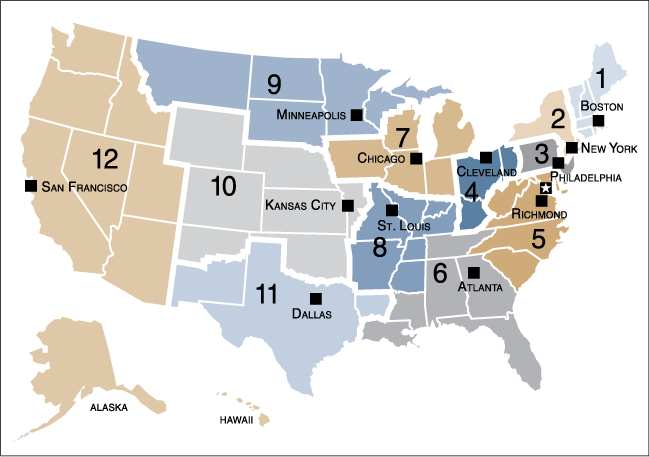By Ryan Hanrahan
Successful Farming’s Chuck Abbott reported Thursday that “the farm economy stabilized in the Midwest and northern Plains but weakened in much of the country this fall as producers nationwide confronted high costs and lower commodity prices, said the Federal Reserve’s Beige Book on Wednesday. ‘Agricultural activity was flat to down modestly, with some crop prices remaining unprofitably low,’ said the national economic summary.”

“The Beige Book, which is based on reports from regional Federal Reserve banks, is published a couple of weeks ahead of the periodic meetings of the Fed committee that sets interest rates,” Abbott reported. “The next meeting will be on Nov. 6 and 7, immediately after the U.S. elections. The new edition of the Beige Book covered developments since early September.”
Sixth District — Atlanta
“Agricultural conditions declined modestly. Farmers in south Georgia and parts of Florida noted significant damage and losses resulting from Hurricane Helene. Demand for beef remained historically strong but declined slightly. Dairy farmers reported strong sales amid reduced competition as high beef prices resulted in more cows being used for beef instead of dairy. Row crop farmers reported low demand, especially for cotton, and many saw disappointing yields. Demand for citrus held steady.”
Seventh District — Chicago
“Farm income expectations for the District were stable over the reporting period despite prospects for above-average corn and soybean harvests. Dry weather helped reduce crop drying costs but also led to lower crop weights, cutting into potential revenue. Corn and soybean prices increased slightly, and farmers were maximizing crop storage in hopes of selling later at higher prices. Cattle prices increased as the inventory of cattle continued to fall, reaching its lowest point since the 1950s. Dairy prices rose some, while egg prices ticked down. Hog prices were steady. Agriculture transportation faced several logistical disruptions, including constrained rail traffic to Mexico and barge slowdowns from low water levels on the Mississippi River. There were reports of agriculture equipment and input sellers offering low- and even zero-interest loans to spur sales.”
Eighth District — St. Louis
Agriculture production has been stable since our previous report; however, overall sector conditions have weakened. Contacts from Mississippi reported that, even with very good yields, most farmers will struggle to break even this year.
“Across the District, crops were healthy and yields were high; however, input prices remained high and commodity prices were low. The decrease in feed prices has been positive for protein producers, yet it failed to offset other cost increases. Contacts also noted a minimal effect of recent hurricanes, and they expected the cotton harvest to be strong despite the rains, although crops’ milling quality has been negatively impacted in Arkansas.”
Ninth District — Minneapolis
“Agricultural conditions in the District were stable at low levels. Preliminary estimates suggested that corn production in District states will decrease modestly from a year ago and soybean production will increase moderately. Wheat production in District states increased significantly from last year. A decline in Montana was more than offset by increases in other states.”
Tenth District — Kansas City
“Activity in the agricultural sector within the Tenth District continued to decline at a moderate pace as crop prices remained weak. As activity slowed, farm lenders still reported increased loan demand driven by higher operating costs and living expenses. Agricultural lenders reported lower farm incomes and a slight decline in farm loan repayment rates during the most recent survey period. Deterioration in farm borrower liquidity and income was more pronounced in states most heavily concentrated in crop production. Financial conditions were more stable in areas most concentrated in cattle production as profit opportunities for cow/calf producers remained strong. Although contacts indicated slight declines in repayment rates and borrower liquidity, overall loan quality remained sound and farm real estate values held firm.”
Eleventh District — Dallas
Contacts continued to report tough financial conditions for row crop farmers this year, as both cotton and grain prices are at unprofitable levels for many producers. Above-average production is needed for producers to cover costs, and that largely hasn’t materialized due to dryness in some areas and hurricane damage in others.
“Drought conditions emerged in more parts of the state over the reporting period, straining crops. One contact emphasized needing to get the new farm bill passed to provide more beneficial safety net programs. On the cattle side, deteriorating grazing conditions are a key concern, though calf and cattle prices remain high and profitable.”
Twelfth District — San Francisco
“Conditions in the agriculture and resource-related industries were largely unchanged. Exports remained subdued, particularly to Asian markets, despite a slightly weaker U.S. dollar relative to the last reporting period. Domestic demand was stable overall, but sales reportedly fell at the retail level for some produce, such as apples. The supply of produce, including tree fruit and nuts, remained solid, largely owing to healthy harvest yields and stored inventory from the prior harvest. Materials and agricultural inputs were readily available.”
Source : illinois.edu